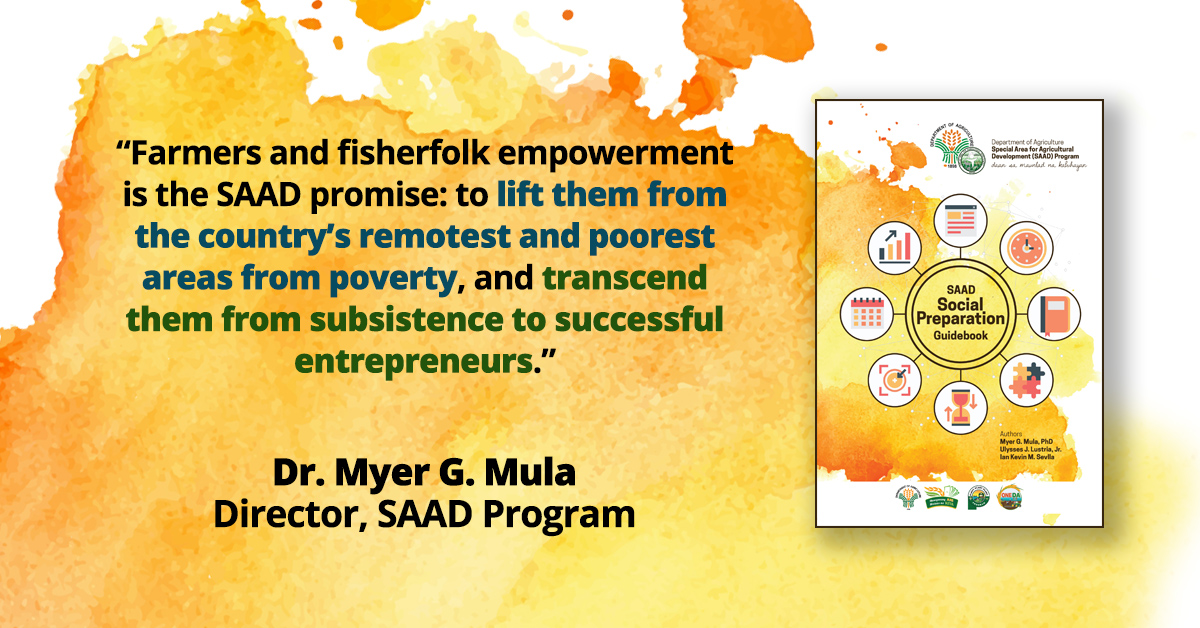QUEZON CITY, June 14, 2021 – The Department of Agriculture (DA) – Special Area for Agriculture Development (SAAD) Program launched a guidebook to strengthen its community-based development approach for the success of its farmers and fisherfolk as well as their livelihood projects.
With the program’s goal of organizing the beneficiaries into market-driven entrepreneurs, the ‘SAAD Social Preparation Guidebook’ was published to help implementers effectively foster community participation in decision-making and management.
The book, authored by SAAD Director Myer G. Mula, SAAD Deputy Director Ulysses J. Lustria, Jr., and SAAD Community Development Officer Ian Kevin M. Sevilla, was based on the program implementers’ experiences since it started in 2017.
Professor Emmanuel Luna of the University of the Philippines Diliman College of Social Work and Community Development also helped the SAAD Program in assembling a harmonized set of social preparation procedures during a workshop from November 17 to 19, 2020 in the Agricultural Training Institute (ATI) – Central Office.
“The socio-cultural, political, technical, and economic differences of each province must be considered,” Prof. Luna said.
The guidebook is proof of the program’s empowerment of marginalized groups – lessening exclusivity and increasing capacity for collective action.
SAAD Director Mula said, “The program intensifies production and livelihood interventions to pro-poor growth and proactive investment in poverty reduction, food security, nutrition, and enterprise.”
Social Preparation as a SAAD component
Social Preparation is one of the SAAD Program components that aims to empower the key persons involved such as farmers, fisherfolk, and local government units through series of meetings and training.
SAAD developed five steps essential to the success of the program.
First is the smooth entry of the program to the 30 covered provinces with high poverty incidence rates. This phase includes establishing partnerships and communication with the local government units to create a long list of prospective beneficiaries.
Second is the profiling of the eligible beneficiaries by recording their personal data.
The third is needs and risk assessment – an important procedure in choosing suitable livelihood interventions for the beneficiaries.
Fourth is organizing the beneficiaries into an association or cooperative. The program implementers will assist the farmers and fisherfolk in establishing leadership and by-laws and securing accreditation forms.
Fifth is the conduct of capability enhancement training, which will ensure the readiness of the beneficiaries in managing the projects. The training – varying from technical, financial, administrative, and ideal work ethics and values – is done before the distribution of livelihood inputs.
SAAD’s participatory approach hopes to improve partnership, local governance, and socioeconomic outcomes such as food security, health and nutrition, and economic livelihoods. ###
Writer: Jhomai Canlas, Head of SAAD Public Relations and Communications


Comments (0)